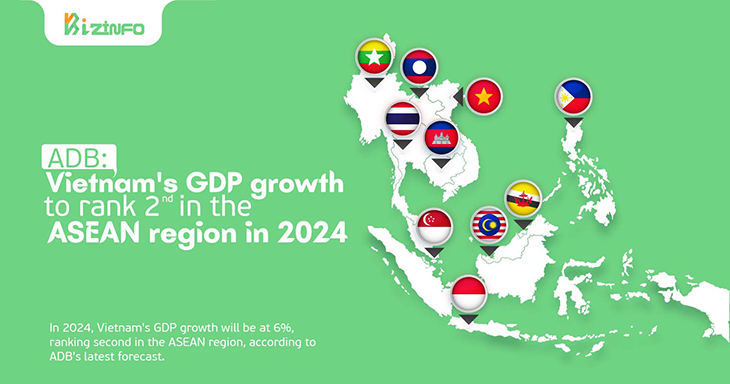Published Sep 2025
World Economic Outlook: August 2025 Signals Diverging Paths
In August 2025, the global economy revealed diverging trajectories. While the U.S. faces slowing job growth and China battles deflationary pressures, the Eurozone stagnates amid weak retail sales. In contrast, Vietnam shines with strong industrial output, vibrant consumption, and a soaring trade surplus emerging as a rare bright spot in an increasingly uncertain world.

August 2025 showcased a world economy at a turning point. While inflation in many advanced economies appears to be cooling, persistent labor market weaknesses, geopolitical tensions, and uneven growth across regions are shaping an uncertain recovery. Among the major economic blocks, the United States, China, the Eurozone, and Vietnam stood out—each telling a unique story of resilience, risk, and recalibration.
United States: Labor Market Loses Momentum Amid Inflation Uncertainty
Job Growth Slows Sharply
In August 2025, the U.S. labor market showed clear signs of cooling. Non-farm payrolls rose by only 22,000 jobs, far below the forecasted 75,000. The unemployment rate climbed to 4.3%, its highest level since 2021, triggering concerns about the overall health of the American economy.
A significant revision to employment data revealed that from March 2024 to March 2025, job creation was overestimated by 911,000 positions. This translates to an average of 76,000 fewer jobs per month than initially reported—indicating that the U.S. economy may have been weaker than expected for over a year.
Producer Prices Decline Slightly
Despite labor market weakness, inflation showed a marginal decline. The Producer Price Index (PPI) fell 0.1% month-over-month in August, contrasting with market expectations of a 0.3% rise. On an annual basis, PPI still rose 2.6%, but the monthly drop provided breathing room for the Federal Reserve to consider a potential interest rate cut in its upcoming September meeting.
China: Mixed Signals in the World’s Second-Largest Economy
Deflationary Pressures Mount
China's economy continued to show uneven performance. The Consumer Price Index (CPI) fell 0.4% year-over-yearin August, marking the sharpest drop in six months and raising fresh concerns about deflation. However, core inflation, which excludes food and energy, rose 0.9%, indicating that basic consumer demand remained stable.
The Producer Price Index (PPI) declined by 2.9% year over year, but the decline slowed, suggesting that wholesale price deflation may have peaked.
Trade and E-Commerce Show Divergence
China's foreign trade performance weakened. Exports in August increased 4.4% year-over-year, down from 7.2% in July, while imports rose just 1.3%, significantly below forecasts. The decline in import growth reflects ongoing challenges in the real estate sector, rising unemployment pressure, and a pullback in consumer stimulus.
Yet, e-commerce logistics emerged as a bright spot. The E-Commerce Logistics Index climbed to 112.3, its highest level in 2025, marking the sixth straight month of growth. This reflects growing momentum in domestic online consumption, despite broader economic challenges.
Europe: Economic Growth Stalls as Retail Weakens
Minimal GDP Expansion in Q2
The Eurozone economy registered weak growth in the second quarter of 2025, with GDP rising only 0.1% quarter-over-quarter. This is the slowest expansion since Q4 2023 and a sharp slowdown from the 0.6% growth recorded in Q1. On a year-over-year basis, GDP rose 1.5%, slightly higher than previous estimates.
Retail Sales Slump and Inflation Stabilizes
Retail activity remained under pressure. In July, retail sales dropped 0.5%, the steepest monthly decline in nearly two years, underscoring weak consumer confidence and reduced purchasing power.
Meanwhile, inflation remained stable. The European Central Bank (ECB) projected 2.0% inflation for 2025, which fell further to 1.6% in 2026 before returning to the 2% target in 2027. The ECB noted that energy inflation is expected to remain negative until the end of 2026 due to climate-related fiscal adjustments.
Vietnam: A Bright Spot in Global Trade and Consumption
Industrial Production and Retail Sales Accelerate
Vietnam's economy continued its strong momentum in August. The Industrial Production Index (IPI) rose 2.2% from the previous month and 8.9% year-over-year. For the first eight months of 2025, IPI climbed 8.5%, indicating robust manufacturing activity.
Domestic consumption was also vibrant. Total retail sales and service revenue in August reached VND 588.2 trillion, up 10.6% year-over-year. Cumulative figures for the first eight months totaled VND 4,579 trillion, representing a 9.4%annual increase. Retail goods sales alone accounted for VND 3,495.8 trillion, 76.3% of total revenue.
Trade Surplus Reaches Nearly USD 14 Billion
Vietnam’s external sector continued to shine. In August, the country’s total trade turnover hit USD 83.06 billion, up 16.0% year-over-year. For the January–August period, trade turnover rose to USD 597.93 billion, with exports up 14.8% and imports increasing 17.9%. This resulted in a healthy trade surplus of USD 13.99 billion, highlighting Vietnam’s resilience amid global uncertainty.
Uneven Recovery and Global Crosswinds Ahead
The global economy in August 2025 showed signs of divergence:
- The United States faces slowing job growth but a potentially more accommodative monetary stance.
- China grapples with deflationary trends and weakening external demand, though e-commerce remains a silver lining.
- The Eurozone is treading water with minimal growth and weakening consumer activity, but inflation is mainly under control.
- Vietnam, in contrast, stands out with strong industrial output, buoyant domestic demand, and a rising trade surplus.
As the world navigates the final quarter of 2025, attention will turn to how central banks adjust their policies, whether China can engineer a soft landing, and how global trade evolves in a landscape marked by resilience and risk.















